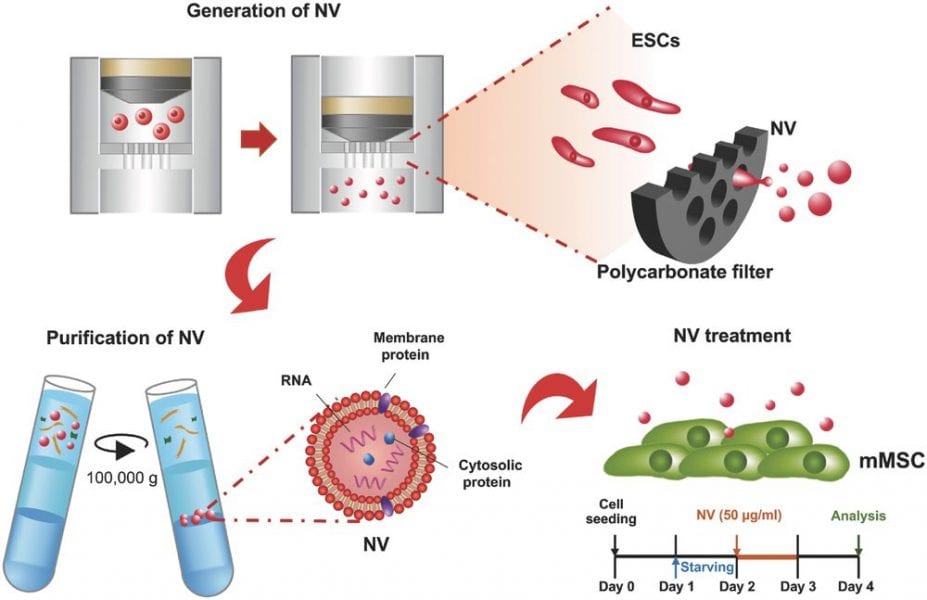Mesenchymal stem cells (MSCs) are widely used in regenerative medicine due to their ability to stimulate immune responses and heal wounds. The use of MSCs does not raise ethical concerns, and they permit autologous transplantation without requiring immunosuppressive drugs. However, when cultured in vitro, MSCs have a low proliferation rate and lose their multipotency.
Extracellular vesicles (EVs) are nanosized vesicles secreted from cells that exist in various body fluids (blood, urine, lymph, milk, and saliva), and they contain information about their source cells. EVs derived from stem cells have an ability to induce the required cell proliferation. However, isolation of a sufficient amount of EVs is difficult because they are rarely secreted and can be lost during the isolation process.
In order to overcome these obstacles, Jaesung Park and colleagues from Pohang University of Science and Technology (POSTECH), Korea, reveal in their recent article in Advanced Healthcare Materials how they have developed “man-made” extracellular vesicle-mimetic nanovesicles that have characteristics similar to those of extracellular vesicles.

The nanovesicles (as shown in the image above) are generated at a large scale through the self-assembly capability of cell membrane fragments in an aqueous solution. The “man-made” version can then be substituted for extracellular vesicles in therapeutic applications due to their similarity to them. The nanovesicles enhance the proliferation of the murine mesenchymal stem cells (MSCs), stimulate the signal pathways related to cell proliferation, and do not influence the other characteristics of murine MSCs. They are therefore thought to have potential in cancer therapy to deliver chemotherapeutic agents to cancer cells, or to deliver siRNA to recipient cells, implying that they could contribute to RNA-based therapy.

















